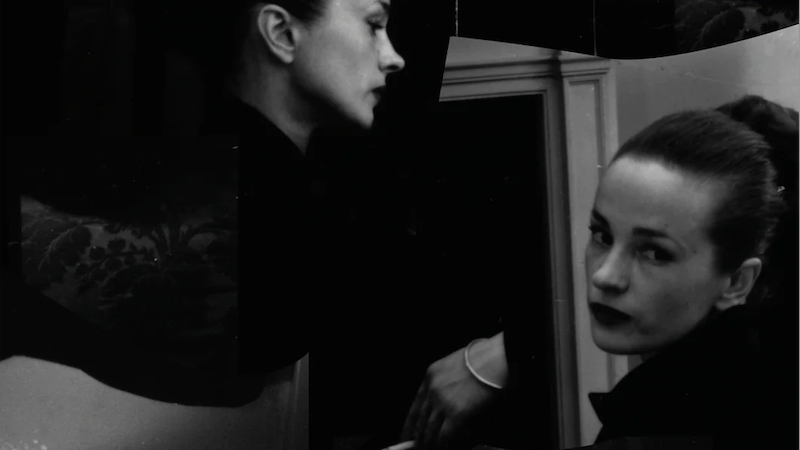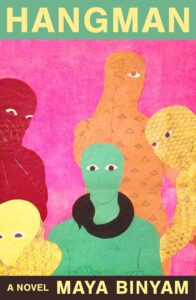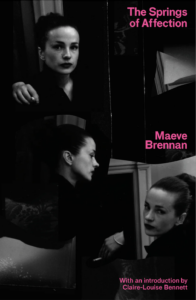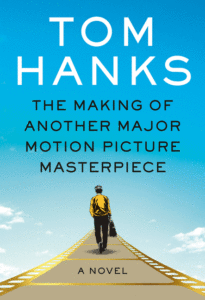
Our treasure chest of terrific reviews this week includes Sam Sacks on Paul Murray’s The Bee Sting, Jamie Hood on Rachel Ingalls’ In the Act, Julian Lucas on Maya Binyam’s Hangman, Meghan Racklin on Maeve Brennan’s The Springs of Affection, Adam Nayman on Tom Hanks’ The Making of Another Major Motion Picture Masterpiece.
“To note that this novel is Irish is to call up another, more flattering generalization: stylistically it’s outstanding, defined by supple, engaging prose and a preternatural sense for storytelling … the new novel, while frequently funny, has more serious intentions. Mr. Murray has always been able to dazzle and entertain, but he has never before developed characters with this much depth or capacity for tragedy. So richly detailed is The Bee Sting that it reads like four books woven into one … Through a succession of suspenseful twists and feints, Mr. Murray advances the stories of the characters individually and then collectively, in a bravura final section that draws all four together. It’s only in a final coup de theatre, when coincidences bring about a literal four-way collision, that the drama feels heavy-handed, manipulated rather than organically unfolding. But by this point, we have spent so much time with the characters that our investment in their lives has been vouchsafed … In the faltering mixture of candor and deception, helplessness and desperate prevention, Mr. Murray creates a heightened but truthful portrait of family love.”
–Sam Sacks on Paul Murray’s The Bee Sting (The Wall Street Journal)
“In Ingalls’s free-market take on Bluebeard, the fruit of female knowledge is neither damnation nor self-determination, but leverage … In the Act seems to contend that what men want—the furthest horizon of their erotic imaginary—is a woman unable to say no…In this way, the sexual politics of the story hew rather closely to those of feminism’s second wave, appearing especially conversant with the porn wars of the eighties, in which controversial figures like Andrea Dworkin argued that the ultimate patriarchal fantasy of woman positions her as a singularly rape-able mannequin. But while Ingalls’s fictions may traffic in the parleys of the consciousness-raising groups of women’s lib, Ingalls distanced herself from feminism as an organized political movement … Women, Ingalls reminds us, are often equal and active collaborators in the recapitulation of institutional misogyny—needless to say, patriarchy’s pockets are deeper. As sharp as this particular line of critique is, the narrative refuses neat closures, opening, instead, onto Ingalls’s usual uncertainties. In the Act ends with an orgy between its human and robot characters that devolves into violence, leaving the people gasping and baffled, with Auto and Dolly nothing but a heap of mechanical rubbish. Afterwards, there is ‘nothing to say. They stared as if they didn’t recognize each other . . . or any other part of the world which, until just a few moments before, had been theirs.’ As with the outcomes of Mrs. Caliban and Binstead’s Safari, Ingalls positions her radical social upheavals as apocalyptic in orientation. The arrival of the sexbots engenders a kind of total disintegration—desire into chaos; scientific progress into annihilation. In a world that feels often as if it’s teetering on the brink of collapse, our invocation of ‘apocalypse’ typically signifies an end to all things, but etymologically speaking, the term indicates a possibly generative process of disclosure: an act of revelation. Left there ‘among the rubble’ of their previous lives, the survivors might hazard a question: Is there another way? Faced with the obliteration of life’s more insipid dailinesses, are they not poised to imagine a different world?”
–Jamie Hood on Rachel Ingalls’ In the Act (The Baffler)

“Narrative is one of many tariffs that the world exacts from the uprooted. But what happens when the vagaries of displacement don’t add up to a story, or at least not one that its subject is willing to tell? In Hangman—a slim, stark, and captivatingly enigmatic début novel by the writer Maya Binyam—this dilemma inspires an experiment in erasure … The context is tempting to deduce, but it also comes to seem unimportant—or even at cross-purposes with Binyam’s project, as if a fog of cultural particularity might have obscured the book’s ethical crux. The real guesswork concerns the narrator’s relationship to his homeland, a place all but denatured by his benumbed observations. There are no distinctive sights, sounds, or smells to provoke nostalgia—only the absurdity of irrational changes, such as an unfinished railway system whose ‘viaducts cast the city in shadow, enticing its inhabitants to ascend staircases that led to nowhere.’ In this world stripped of sensory detail, social structures, like families and economies, become more nakedly visible … Rachel Cusk’s Outline trilogy, whose poker-faced narrator also unravels others’ self-narratives, is a clear influence…Yet the strategy has a different resonance in an exile’s tale than it does amid the posturing and ennui of creative-writing workshops. The expectation for an American novel about an African immigrant is that it will perform a task of translation: here is where I come from, and these are the painful circumstances under which I left. Hangman, with its sphinxlike style, turns a mirror on these demands. Faced with the nosiness of relatives, the vampiric empathy of foreigners, and the lazy psychoanalysis of his countrymen, its narrator would simply prefer not to.”
–Julian Lucas on Maya Binyam’s Hangman (The New Yorker)

“Brennan describes interiors and interior lives in detail; they are stories primarily about women and their worlds, which, in these stories, hardly extend beyond their garden walls. The marriages are entirely unsuitable, always made up of two people unable to understand how to share space or how to share their hopes and fears and feelings; domesticity is more claustrophobic than cozy. This focus has led some critics to understand her as a writer who conspicuously avoided politics; one who, in Kate Bolick’s words, ‘was preoccupied with a different sort of brutality: the emotional policing, waterboarding and extortion that can take place within even the most well-intended and pious marriage.’ But Brennan was acutely aware that the domestic and the political were intertwined … Brennan’s feel for revolutionary politics also manifests subtly in the domestic short stories in the book, though they don’t address Irish politics directly. Both revolution and marriage are, after all, exercises of hope; you might even call them both attempts at homemaking—efforts to construct something new, stable, and supportive. Her stories of people who cannot be happy together are about the uncomfortable friction between grand plans for the future and the relentless dailiness of living—a lesson learned by thwarted revolutionaries and unhappy spouses alike … The rare place she consistently returned to was the childhood home in her fiction. William Maxwell, in his introduction to the original publication of The Springs of Affection, called 48 Cherryfield Avenue her imagination’s home. It was the only one she had.”
–Meghan Racklin on Maeve Brennan’s The Springs of Affection (The New Republic)

“In outline, The Making of Another Motion Picture Masterpiece is a behind-the-scenes picaresque in the style of Terry Southern’s notorious 1970 novel Blue Movie or Robert Altman’s Oscar-nominated comedy The Player (1992), both of which limned the absurdity of lavishing time, money, and talent on mediocre material. Where Southern and Altman were congenital skeptics, however, Hanks is a true believer … For all his teaspoon-sized digs at the profligacy of vertically integrated studios and the pop-cultural dominance of the Marvel Cinematic Universe—which manifests here in the form of a thinly veiled surrogate company called Dynamo—Hanks ultimately praises moviemaking in all its variegated forms, even the bland IP of our current moment. Not only that, but he’s determined to scrub most of the sleaze off in the process … Masterpiece might have been more fun with a problematic exile at its center rather than a folksy, Spielbergian showman. You can’t have a bonfire without some vanity for kindling … The closing passages of Masterpiece have an uncanny symbolic resemblance to sequences in recent acclaimed prestige pictures like Steven Spielberg’s The Fabelmans and Damien Chazelle’s Babylon. Beyond their shared love of sentiment and spectacle, these films feel like nostalgic interventions on behalf of a bygone film culture, inveighing against the anodyne, atomized attitudes of the streaming era … Like Spielberg and Chazelle, he imagines the cinema not as a house of paper but a place of worship—a shared experience offering collective catharsis and delight, except that his beatific climax is set in the present tense. Hanks’s vision of a sold-out Times Square cinema palace, with a thousand satisfied ticket buyers gazing up in wonder at the screen at another motion picture masterpiece, is probably the corniest moment in the entire book, but it’s also the most moving; sometimes sarcasm is overrated.”
–Adam Nayman on Tom Hanks’ The Making of Another Major Motion Picture Masterpiece (The Nation)

